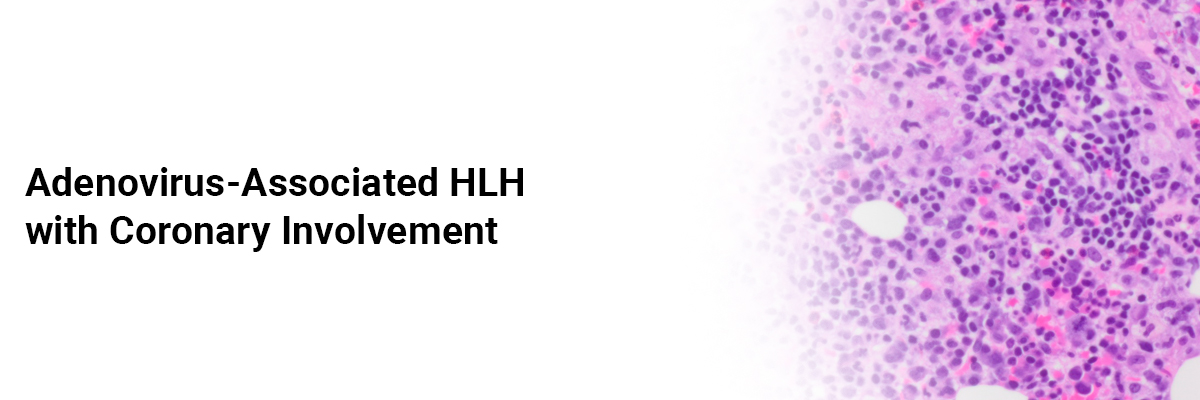
 IJCP Editorial Team
IJCP Editorial Team
Adenovirus-associated HLH with coronary involvement
A 2-year-old boy was treated in the outpatient clinic for a febrile illness associated with cough and cold. However, these therapies failed. He also exhibited increasing respiratory rates. The child had been generally healthy since birth.
The boy was immediately hospitalized; adenovirus was detected on the upper respiratory Biofire test. The fever persisted despite bronchodilators and fluids. This prompted an echocardiogram on day five – revealing significant coronary artery dilation without Kawasaki disease features. Treatment included intravenous immunoglobulin (IVIG), but respiratory distress necessitated transfer to the pediatric intensive care unit (PICU).
Here, the child received heated, humidified high-flow oxygen (HHHFNC). However, hepatosplenomegaly was detected; on chest X-ray, there was a dense consolidation in the left lower zone. Further, the C-reactive protein and procalcitonin levels were elevated. Antibiotics (vancomycin, meropenem) were initiated.
Subsequent echocardiography showed dilated coronary arteries, and the child was commenced on high-dose aspirin and inj. methylprednisolone. Persistent fever directed a work-up for hemophagocyticlymphohistiocytosis (HLH)––which revealed bicytopenia, hyperferritinemia, and hypertriglyceridemia. The child received IVIG, methylprednisolone, and sc. inj. anakinra.
On day four of anakinra, echocardiography showed improvement, but the child remained febrile and HHHFNC-dependent. Anakinra was continued, and steroids were switched to IV hydrocortisone. Yet, the child became afebrile on day six of anakinra; HRCT revealed lung consolidation. After one week of anakinra, the dose was reduced, and the child remained afebrile. Anakinra was ceased after day ten. Whole exome sequencing found no genetic evidence of primary HLH.
Follow-up investigations showed decreasing inflammatory markers, and echocardiography revealed a small aneurysm in the proximal left anterior descending artery. The child was gradually weaned off steroids and antibiotics, was discharged after a month from admission, and continued aspirin – six months post-discharge.
Anakinra, rather than etoposide, was chosen due to the lower sepsis risk. In this case, anakinra exhibits efficacy in treating secondary HLH – emphasizing its potential as a first-line agent. The case highlights the unique aspect of adenovirus-associated HLH with coronary involvement, underscoring the consideration of anakinra as a treatment option in such cases.
Source: Chowdhury P, Saha S, Meur S. Indian Pediatrics. 2023 Dec;60(12):1041-2.

IJCP Editorial Team
Comprising seasoned professionals and experts from the medical field, the IJCP editorial team is dedicated to delivering timely and accurate content and thriving to provide attention-grabbing information for the readers. What sets them apart are their diverse expertise, spanning academia, research, and clinical practice, and their dedication to upholding the highest standards of quality and integrity. With a wealth of experience and a commitment to excellence, the IJCP editorial team strives to provide valuable perspectives, the latest trends, and in-depth analyses across various medical domains, all in a way that keeps you interested and engaged.




















Please login to comment on this article